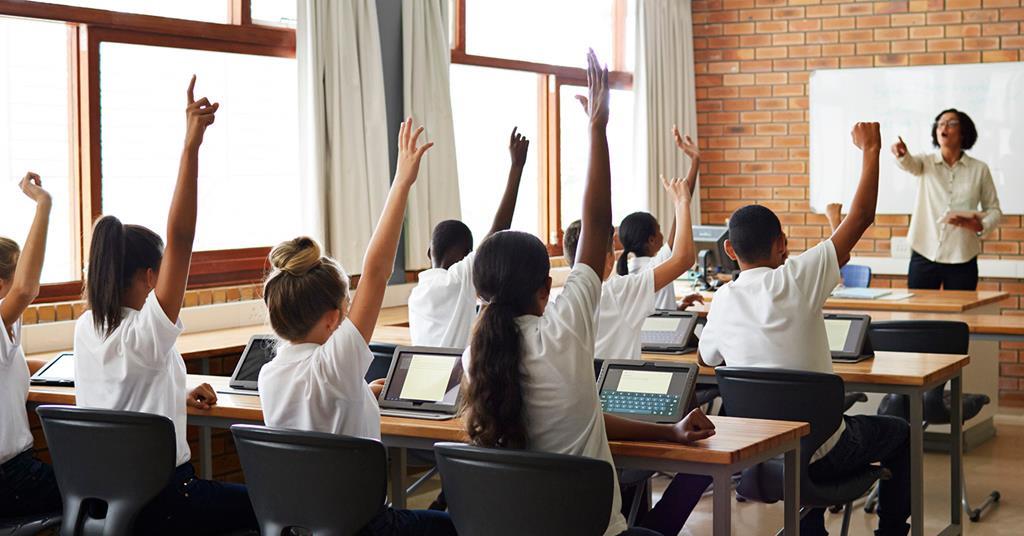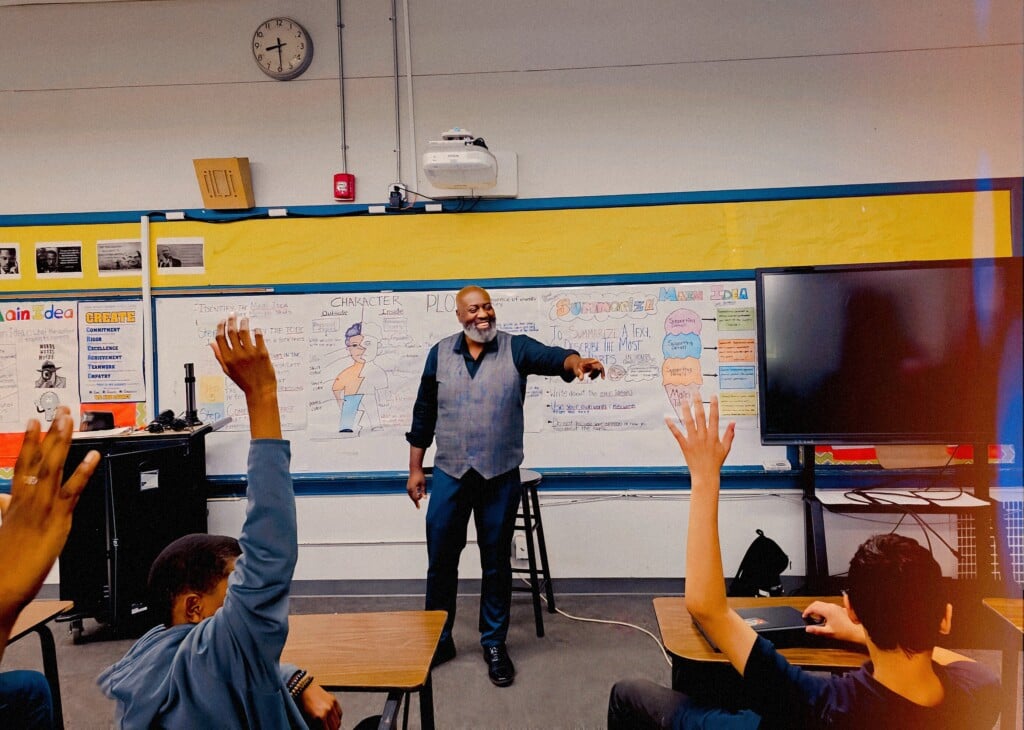Personalized Primary Science Tuition Singapore to Cater to Your Child’s Needs
Personalized Primary Science Tuition Singapore to Cater to Your Child’s Needs
Blog Article
Exploring the Different Teaching Techniques in Key Scientific Research Education Today
The landscape of primary scientific research education is developing, with different mentor approaches getting prestige in contemporary class. Inquiry-based understanding, hands-on experiments, and the combination of modern technology are redefining how teachers involve young minds. In addition, collaborative methods and set apart instruction are being utilized to accommodate the varied demands of students, enhancing both interaction and understanding. As we check out these methodologies, inquiries emerge concerning their effectiveness and the ramifications for future academic techniques. What might these changes in method mean for the next generation of students?
Inquiry-Based Discovering
Inquiry-Based Discovering (IBL) is a pedagogical strategy that urges pupils to explore scientific concepts with wondering about, investigation, and hands-on trial and error. This approach emphasizes the function of trainees as energetic participants in their discovering, advertising important thinking and analytic abilities. By engaging with real-world concerns, pupils become motivated and curious, which enhances their understanding of clinical concepts.
In IBL, teachers act as facilitators, guiding trainees as they browse their queries rather than providing information straight. This student-centered technique allows for distinction, suiting numerous discovering styles and speeds. Students create skills in creating hypotheses, creating experiments, and examining data, which are critical for clinical literacy.
In addition, IBL cultivates cooperation among pupils, encouraging them to share ideas and searchings for. This collective query promotes social skills and a feeling of neighborhood within the class. The process of query encourages durability, as trainees learn to welcome failing as a stepping rock towards understanding.
Hands-On Experiments
Hands-on experiments are an essential part of effective scientific research education, enhancing the principles of inquiry-based learning. These experiments permit students to involve straight with clinical concepts, fostering a much deeper understanding with experiential knowing. By controling products and observing end results, young students can understand abstract theories in substantial methods.
Such tasks promote essential thinking and problem-solving skills, as trainees assume results, conduct experiments, and examine results. This procedure urges them to ask inquiries, fine-tune their understanding, and create a scientific attitude. Additionally, hands-on experiments can be customized to varied discovering designs, guaranteeing that all trainees have the chance to engage meaningfully with the web content.
Moreover, hands-on experiments often motivate partnership amongst peers, promoting team effort and interaction abilities. Working in groups makes it possible for students to share ideas, go over findings, and pick up from each other, which boosts their total instructional experience.
Including hands-on experiments into the main science curriculum not only enhances the learning setting but also grows a long-lasting passion in science. By actively participating in their education and learning, students are more likely to create an interest for scientific questions that extends beyond the classroom.

Innovation Assimilation
Incorporating innovation right into main scientific research education and learning has actually become significantly necessary in promoting trainee involvement and boosting discovering results. Making use of digital tools, such as interactive simulations, digital laboratories, and educational software application, offers students with possibilities to explore clinical concepts in innovative ways. These sources help with a deeper understanding of complex topics by allowing students to visualize and manipulate variables that would certainly be not practical in a standard classroom setting.
Moreover, modern technology combination motivates customized finding out experiences. Trainees can advance at their very own pace, reviewing difficult ideas through multimedia resources, which accommodate various learning designs. This flexibility not just supports private growth however likewise grows a sense of autonomy in students.
Additionally, innovation offers as a bridge to real-world science, attaching students with present research study and professional contributions. Accessibility to clinical journals and online databases broadens students' point of views on scientific inquiry and promotes essential believing abilities.
Collaborative Discovering
Collective learning plays an important function in primary science education and learning by fostering synergy and communication skills amongst trainees. This strategy urges students to collaborate, share knowledge, and take part in analytical, which improves their understanding of scientific principles. By taking part in group tasks, students learn to verbalize their concepts, pay attention to varied perspectives, and bargain solutions, all of which are necessary abilities in both real-world and scholastic contexts.

Research study indicates that collaborative learning can bring about raised inspiration and involvement in scientific research subjects, as students find pleasure in common experiences (primary science tuition Singapore). In addition, this method prepares pupils for future joint undertakings, equipping them with the skills necessary for efficient team effort in higher education and specialist atmospheres. Eventually, accepting collaborative understanding in key science education and learning can substantially enhance the knowing experience and promote a deeper understanding of clinical questions
Set Apart Direction

Differentiated direction can show up in numerous means, such as varying the web content, procedures, or items of learning. Educators might make use of tiered assignments that provide varying levels of intricacy, enabling pupils to work at their particular preparedness degrees. In addition, adaptable grouping methods can facilitate cooperation amongst trainees with different capabilities, promoting peer learning.
Assessment plays an important function in this technique, as it notifies instruction and aids educators comprehend each student's unique requirements. Formative analyses, such as observations and quizzes, can assist instructors Source in readjusting their strategies to boost discovering end results. primary science tuition Singapore. Eventually, by carrying out separated instruction in key science education and learning, educators can grow a much more equitable and efficient learning setting, empowering all students to reach their complete potential in comprehending scientific phenomena
Final Thought
In summary, the diverse teaching techniques in main science education and learning, consisting of inquiry-based knowing, hands-on experiments, technology assimilation, collaborative understanding, and separated guideline, collectively add to a much more effective understanding atmosphere. These methods advertise crucial thinking, problem-solving abilities, and a deeper comprehension of clinical ideas. By executing these methods, educators can create supportive and interesting class that deal with the diverse needs of students, inevitably promoting a lifelong rate of interest in science and enhancing academic accomplishment.
Inquiry-Based Discovering (IBL) is an read the full info here instructional technique that encourages students to discover clinical ideas with questioning, investigation, and hands-on experimentation.Collaborative learning plays a vital duty in key scientific research education and learning by cultivating teamwork and communication abilities amongst trainees.Research study shows that collective discovering can lead to boosted inspiration and interaction in science subjects, as trainees locate enjoyment in common experiences.In fostering a comprehensive learning atmosphere, set apart instruction arises as a vital strategy to suit the varied requirements and capabilities of students in primary scientific research education. Ultimately, by carrying out distinguished guideline in main science education and learning, instructors can cultivate an extra reliable and equitable understanding environment, empowering all pupils to reach their full potential in understanding clinical sensations.
Report this page